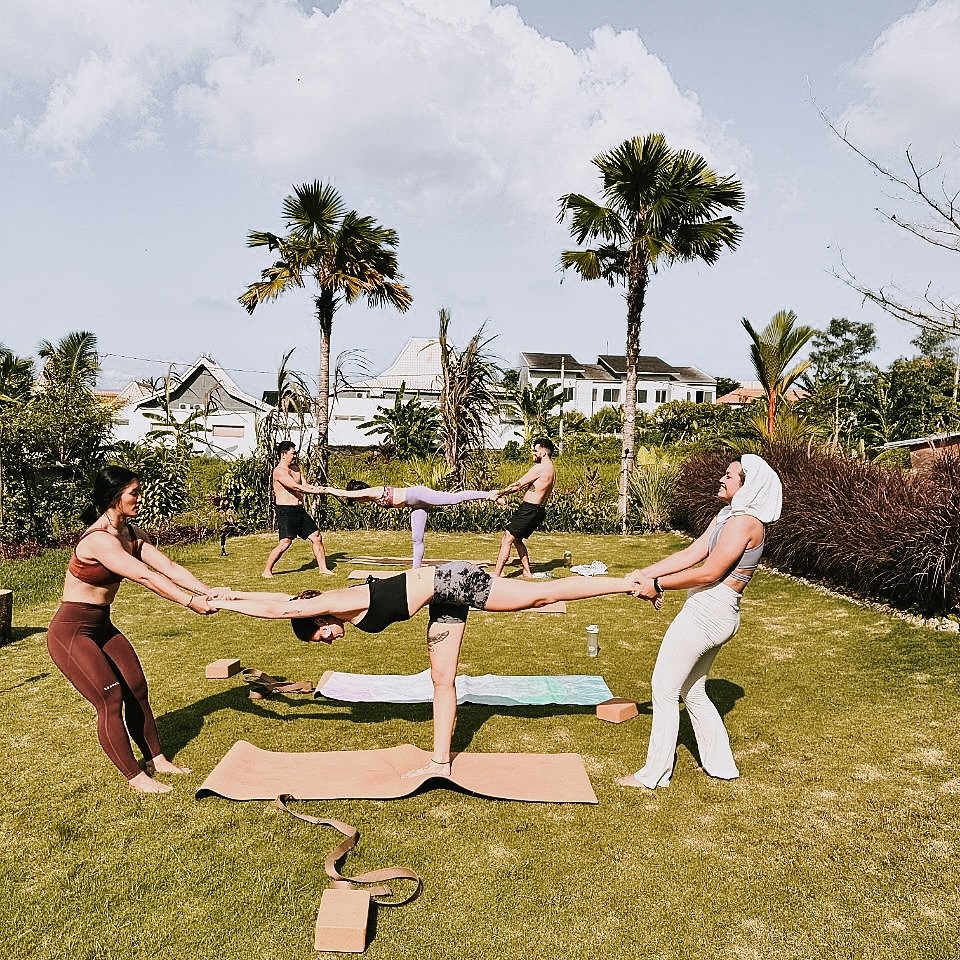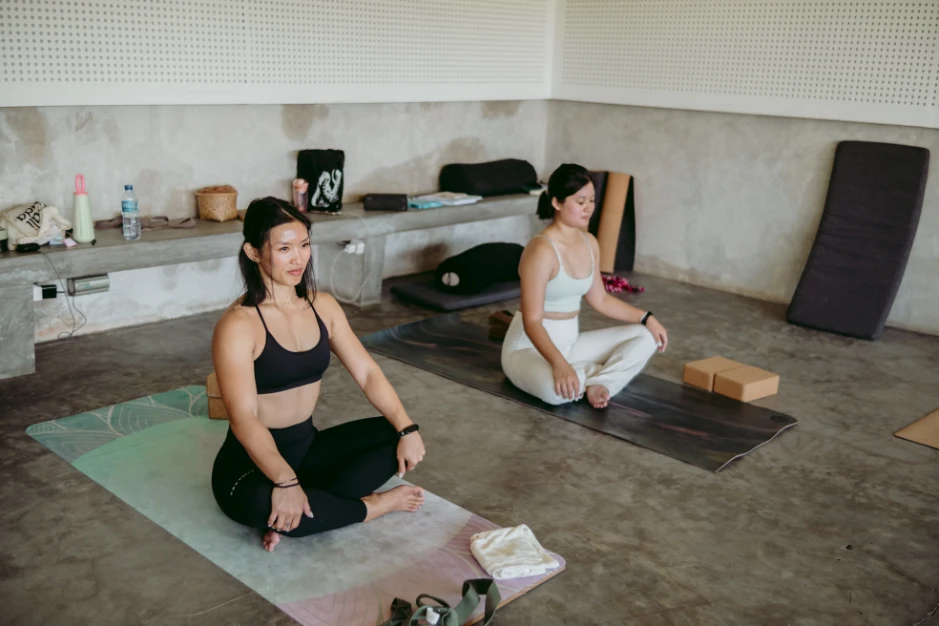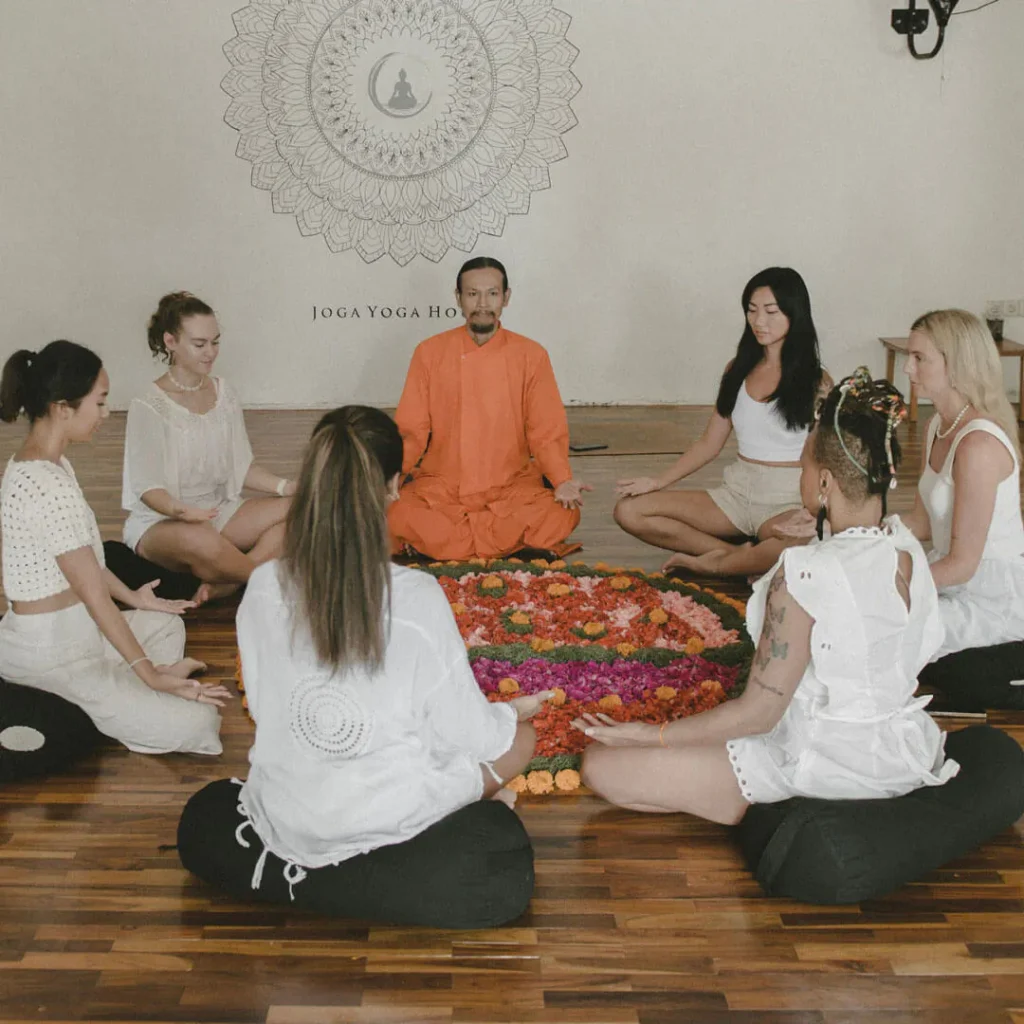Is yoga better than chiropractic? This question, often pondered by those seeking relief from pain and improved well-being, is complex and has no simple answer. Both yoga and chiropractic offer a unique blend of physical, mental, and emotional benefits, yet their approaches and effectiveness can vary significantly depending on individual needs and conditions.
This exploration delves into both disciplines’ origins, practices, and potential advantages, providing insights into their similarities, differences, and potential synergy.
From the ancient wisdom of yoga to the modern science of chiropractic, these practices have evolved over centuries, offering various therapeutic options for various ailments. Understanding their underlying principles, benefits, and limitations can empower individuals to make informed decisions about their health journey.
Understanding Yoga and Chiropractic

Both yoga and chiropractic care are popular approaches to health and well-being. Each has distinct origins and principles. Understanding their foundations can help individuals make informed choices about incorporating these practices.
Yoga
Yoga is an ancient Indian practice encompassing physical postures, breathing techniques, and meditation. Its roots are in Hinduism and Buddhism, and its goal is to achieve a state of union between the mind, body, and spirit.
Yoga Principles
- Asanas: Physical postures designed to strengthen and stretch the body, improving flexibility, balance, and coordination.
- Pranayama: Breathing exercises that regulate the flow of prana (life force), promoting relaxation and enhancing mental clarity.
- Meditation: Techniques for calming the mind and achieving a state of deep focus and awareness, fostering emotional well-being and reducing stress.
- Yoga Philosophy: Yoga emphasizes self-awareness, mindfulness, and the interconnectedness of all things, encouraging a holistic approach to health.
Chiropractic
Chiropractic is a healthcare profession focusing on the relationship between the spine and the nervous system. Developed in the late 19th century, chiropractic care aims to improve health by restoring proper alignment and function to the spine.
Chiropractic Principles
- Spinal Alignment: Chiropractors believe that misalignments in the spine (subluxations) can interfere with nerve function, leading to pain and other health problems.
- Nervous System: The nervous system controls all bodily functions, and chiropractors believe restoring proper spinal alignment can optimize nerve function and improve overall health.
- Holistic Approach: While focusing on the spine, chiropractic care also considers the whole body, lifestyle factors, and other health conditions.
- Manual Adjustments: Chiropractors use hands-on techniques to adjust the spine, restoring proper alignment and reducing pressure on nerves.
Philosophical Comparison: Is doing yoga better than chiropractor
While yoga and chiropractic care emphasize a holistic approach to health, their underlying philosophies differ. Yoga emphasizes self-awareness, mindfulness, and the interconnectedness of the mind, body, and spirit. On the other hand, chiropractic focuses on the relationship between the spine and the nervous system, believing that spinal alignment plays a crucial role in overall health.
Physical Benefits of Yoga and Chiropractic

Both yoga and chiropractic care offer numerous physical benefits. They address common musculoskeletal concerns and promote overall well-being. While their approaches differ, they aim to improve flexibility, strength, and pain management.
Benefits of Yoga
Yoga is a mind-body practice that combines physical postures (asanas), breathing techniques (pranayama), and meditation. It is widely recognized for its physical benefits, enhancing flexibility, strength, and balance. Yoga’s impact on flexibility is significant. The various poses, often held for extended periods, gently stretch muscles and ligaments, improving range of motion and reducing stiffness.
This increased flexibility can benefit individuals of all ages, from athletes seeking peak performance to seniors seeking mobility. Yoga also contributes to building strength. Many yoga poses engage multiple muscle groups, requiring strength and endurance to hold and transition between positions.
This full-body engagement strengthens muscles, improves core stability, and enhances overall physical capacity. Furthermore, yoga’s focus on balance and coordination is crucial for maintaining stability and preventing falls, especially as we age. Yoga poses often challenge balance, requiring the body to adapt and maintain equilibrium.
This practice improves proprioception and the body’s awareness of its position in space, enhancing coordination and reducing the risk of falls.
Benefits of Chiropractic Adjustments
Chiropractic care focuses on the relationship between the spine and overall health. Chiropractors use hands-on techniques to diagnose and treat musculoskeletal conditions, primarily focusing on spinal alignment. Chiropractic adjustments are designed to restore proper spinal alignment and reduce pressure on nerves, which can contribute to pain and dysfunction.
These adjustments can benefit various conditions, including back pain, neck pain, headaches, and sciatica. Chiropractic adjustments, known as subluxations, are often used to address misalignments in the spine, leading to nerve compression, muscle tension, and pain.
Chiropractic care aims to reduce these symptoms and improve overall spinal function by restoring proper alignment.
Comparison of Yoga and Chiropractic
Both yoga and chiropractic care offer valuable benefits for musculoskeletal health. However, their approaches and effectiveness for specific conditions may vary. Yoga is a holistic practice emphasizing flexibility, strength, and balance, promoting overall well-being. It can be particularly effective for improving flexibility, reducing stress, and enhancing body awareness.
While both yoga and chiropractic care benefit physical well-being, the question of which is “better” depends on individual needs and goals. Yoga emphasizes flexibility, strength, and mindfulness, while chiropractic focuses on spinal alignment and pain relief.
This immersive experience allows you to delve into the philosophy and practice of yoga, ultimately empowering you to make informed decisions about your health and well-being.
Yoga is often used as a preventative measure for managing chronic conditions like back pain. Chiropractic care focuses on spinal alignment and pain relief, providing targeted interventions for specific musculoskeletal issues. It can effectively address acute pain, such as back or neck pain, and restore proper spinal function. Yoga can be a valuable practice for individuals seeking to improve flexibility, strength, and balance.
Those experiencing acute pain or seeking targeted spinal adjustments may benefit from chiropractic care. It is important to consult with a qualified healthcare professional to determine the most appropriate approach for your individual needs.
Safety and Considerations

While both yoga and chiropractic care offer potential benefits, it’s crucial to understand the associated risks and considerations before embarking on either practice. This section will delve into the potential risks and contraindications associated with yoga and chiropractic adjustments, allowing you to make informed decisions about your health and well-being.
Yoga Safety Considerations
Yoga, like any form of exercise, carries inherent risks. Understanding these risks and taking appropriate precautions can help minimize potential complications.
- Pre-existing conditions: Certain pre-existing conditions, such as high blood pressure, heart disease, and pregnancy, can pose challenges during yoga practice. It’s essential to consult a healthcare professional before starting yoga, especially if you have any underlying health issues.
- Injury risk: Improper form or pushing beyond your limits can lead to injuries, especially in poses requiring flexibility or strength. It’s crucial to start slowly, listen to your body, and avoid pushing yourself beyond your current capabilities.
- Overexertion: Yoga can be physically demanding, and overexertion can lead to muscle strain, fatigue, and even injury. It’s essential to listen to your body, take breaks when needed, and avoid pushing yourself beyond your limits.
- Inadequate instruction: Inexperienced or unqualified instructors can lead to improper form and increased risk of injury. Choose certified instructors with a solid understanding of yoga principles and proper alignment.
Chiropractic Safety Considerations
Chiropractic adjustments, while generally safe, can also carry potential risks, particularly for individuals with certain conditions.
- Neck manipulation: Neck adjustments, while effective for some, can be risky for individuals with certain conditions, such as a history of stroke or a weakened blood vessel. It’s essential to discuss your medical history with your chiropractor before undergoing any neck adjustments.
- Headaches: Some individuals may experience headaches after a chiropractic adjustment, especially those with pre-existing migraines or tension headaches. While these headaches are usually temporary, it’s essential to report any persistent or worsening headaches to your chiropractor.
- Spinal cord injury: Although rare, spinal cord injury is a possible complication of chiropractic adjustments, especially with neck manipulations. This risk is higher in individuals with certain pre-existing conditions, such as a weakened blood vessel or a history of stroke.
Comparing Safety Profiles
Both yoga and chiropractic care can offer potential benefits, but their safety profiles differ. When practiced safely and under qualified instruction, yoga generally poses a lower risk of serious complications. However, improper form or overexertion can lead to injuries. Chiropractic adjustments, while generally safe, carry a higher risk of complications, particularly for individuals with certain pre-existing conditions.
Individualized Approaches

Both yoga and chiropractic care emphasize personalized approaches to address individual needs and goals. However, how this personalization is achieved differs significantly between the two disciplines.
Yoga’s Tailored Practice
Yoga’s adaptability to individual needs is a cornerstone of its practice. The vast array of yoga styles, postures (asanas), breathing techniques (pranayama), and meditation practices allows for a highly customized approach. Yoga instructors assess students’ physical capabilities, limitations, and goals before recommending a suitable practice.
They may also modify poses to accommodate injuries, age, or other factors. For instance, a beginner with limited flexibility might start with gentle stretches and modified poses, while a more experienced practitioner might focus on challenging poses to build strength and endurance.
Yoga emphasizes self-awareness and encourages students to listen to their bodies. This mindful approach allows individuals to adjust their practice as needed, ensuring it remains safe and effective.
Yoga and Chiropractic in Combination
Combining yoga practice with chiropractic care can offer a holistic approach to well-being, potentially enhancing the benefits of each modality. This synergistic approach can address musculoskeletal imbalances, promote flexibility, and improve overall health.
Potential Benefits of Combining Yoga and Chiropractic
Combining yoga and chiropractic care can offer a comprehensive approach to addressing musculoskeletal issues, promoting flexibility, and enhancing overall well-being.
- Improved Range of Motion and Flexibility: Yoga postures, particularly those focusing on spinal mobility and stretching, can complement chiropractic adjustments by increasing range of motion and flexibility.
- Enhanced Muscle Strength and Stability: Yoga’s emphasis on core strengthening and muscle engagement can improve muscle strength and stability, supporting the adjustments made by a chiropractor.
- Reduced Pain and Inflammation: Both yoga and chiropractic care can effectively reduce pain and inflammation. Yoga’s gentle stretches and breathing exercises can alleviate muscle tension, while chiropractic adjustments can restore proper joint alignment, reducing pressure on nerves and tissues.
- Improved Posture and Balance: Yoga postures focusing on spinal alignment and core strengthening can improve posture, while chiropractic adjustments can correct spinal misalignments, contributing to better balance.
- Stress Reduction and Relaxation: Yoga’s emphasis on mindfulness and deep breathing can effectively reduce stress and promote relaxation, complementing the stress-reducing benefits of chiropractic care.
Sample Program for Low Back Pain
A combined yoga and chiropractic program for low back pain can be tailored to address specific needs.
- Chiropractic Care: A chiropractor assesses the patient’s condition and performs adjustments to restore proper spinal alignment, reduce pressure on nerves, and alleviate pain.
- Yoga Practice: The yoga program would focus on gentle stretches, strengthening exercises, and breathing techniques to improve flexibility, strengthen core muscles, and reduce inflammation.
- Sample Yoga Poses:
- Cat-Cow Pose: This pose gently stretches the spine and improves flexibility.
- Child’s Pose: This pose relaxes the back muscles and promotes deep breathing.
- Cobra Pose: This pose strengthens the back muscles and improves spinal mobility.
- Bridge Pose: This pose strengthens the glutes and hamstrings, supporting the lower back.
Synergy Between Yoga and Chiropractic
The synergy between yoga and chiropractic care stems from their shared focus on musculoskeletal health and well-being. Yoga’s emphasis on flexibility, strength, and mindfulness complements chiropractic adjustments, creating a comprehensive approach to addressing musculoskeletal issues and promoting overall health.
End of Discussion

Ultimately, the choice between yoga and chiropractic, or even the combination of both, depends on individual preferences, health goals, and the guidance of qualified professionals. While yoga offers a holistic approach to physical, mental, and spiritual well-being, chiropractic focuses on the musculoskeletal system and its connection to overall health.
By exploring the nuances of each practice, individuals can embark on a personalized path toward a healthier, happier, and more balanced life.
FAQ Corner: Is Doing Yoga Better Than Chiropractor
Is yoga an excellent alternative to chiropractic care?
Yoga can complement chiropractic care but may not be a suitable replacement for all individuals. Combining both approaches may be most effective depending on the specific condition and its severity.
Can I do yoga if I have a spinal injury?
If you have a spinal injury, it’s crucial to consult with a medical professional and a qualified yoga instructor to determine safe and appropriate modifications for your condition.
How often should I see a chiropractor?
The frequency of chiropractic visits depends on the individual’s condition and treatment plan. A chiropractor can advise on the appropriate schedule for your specific needs.






